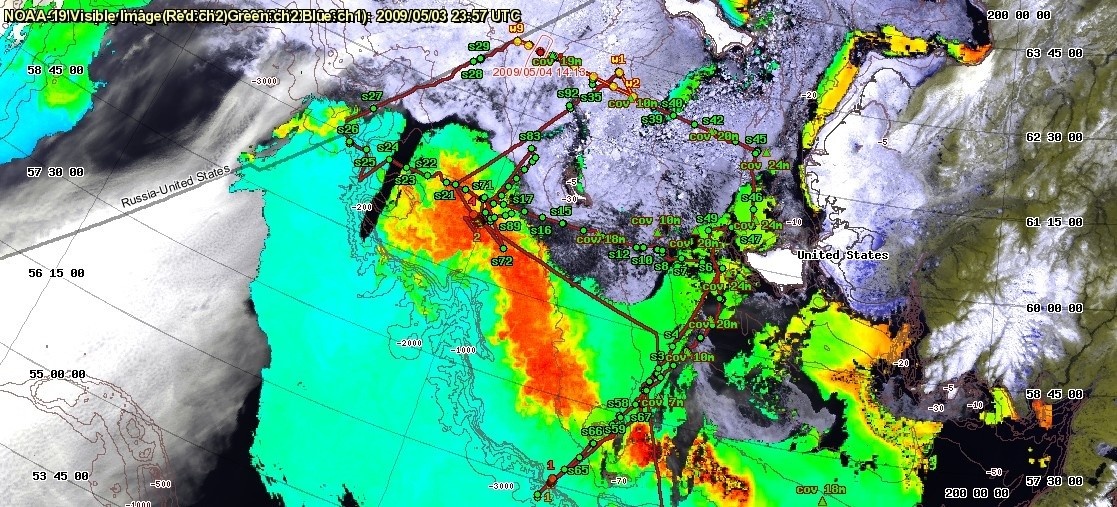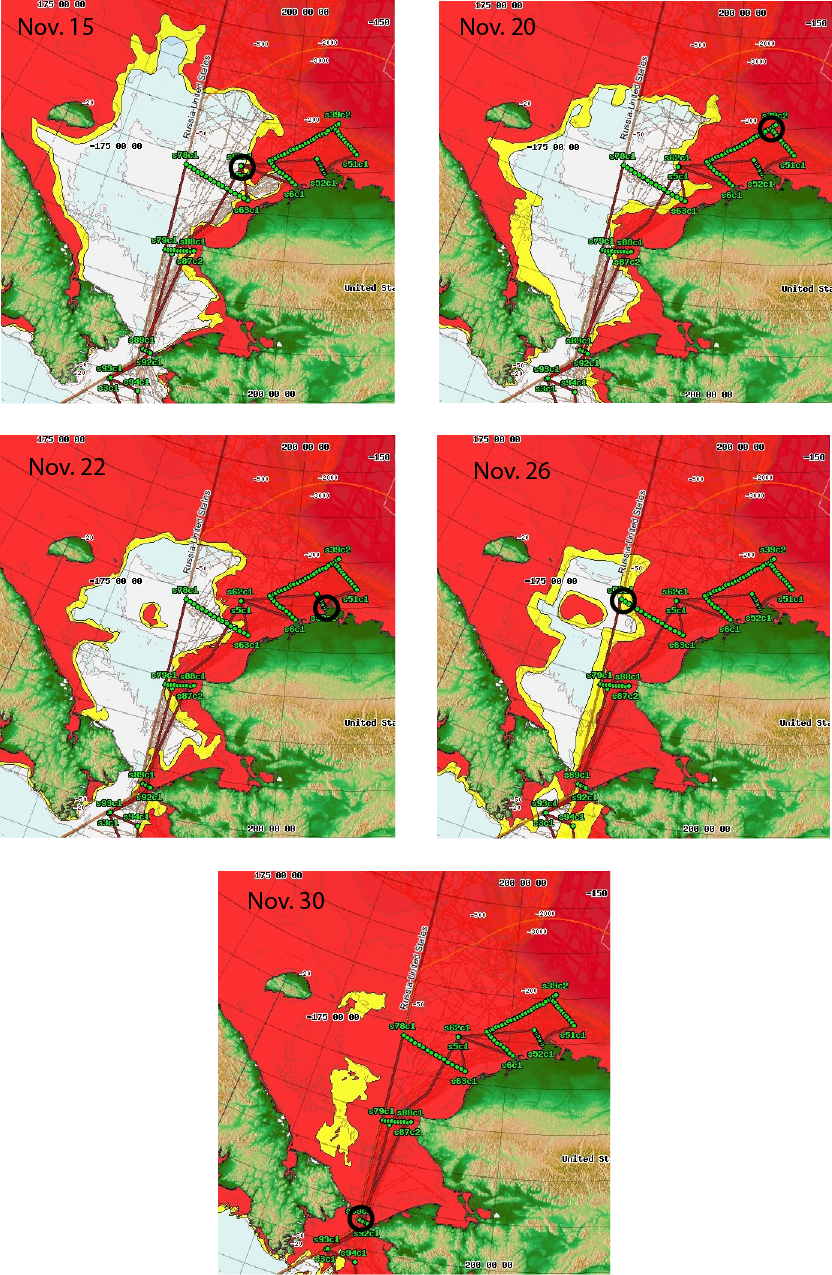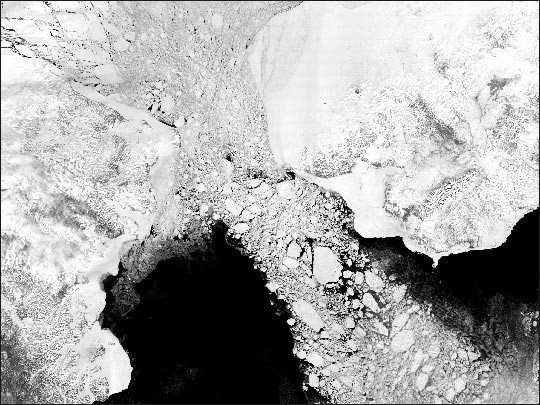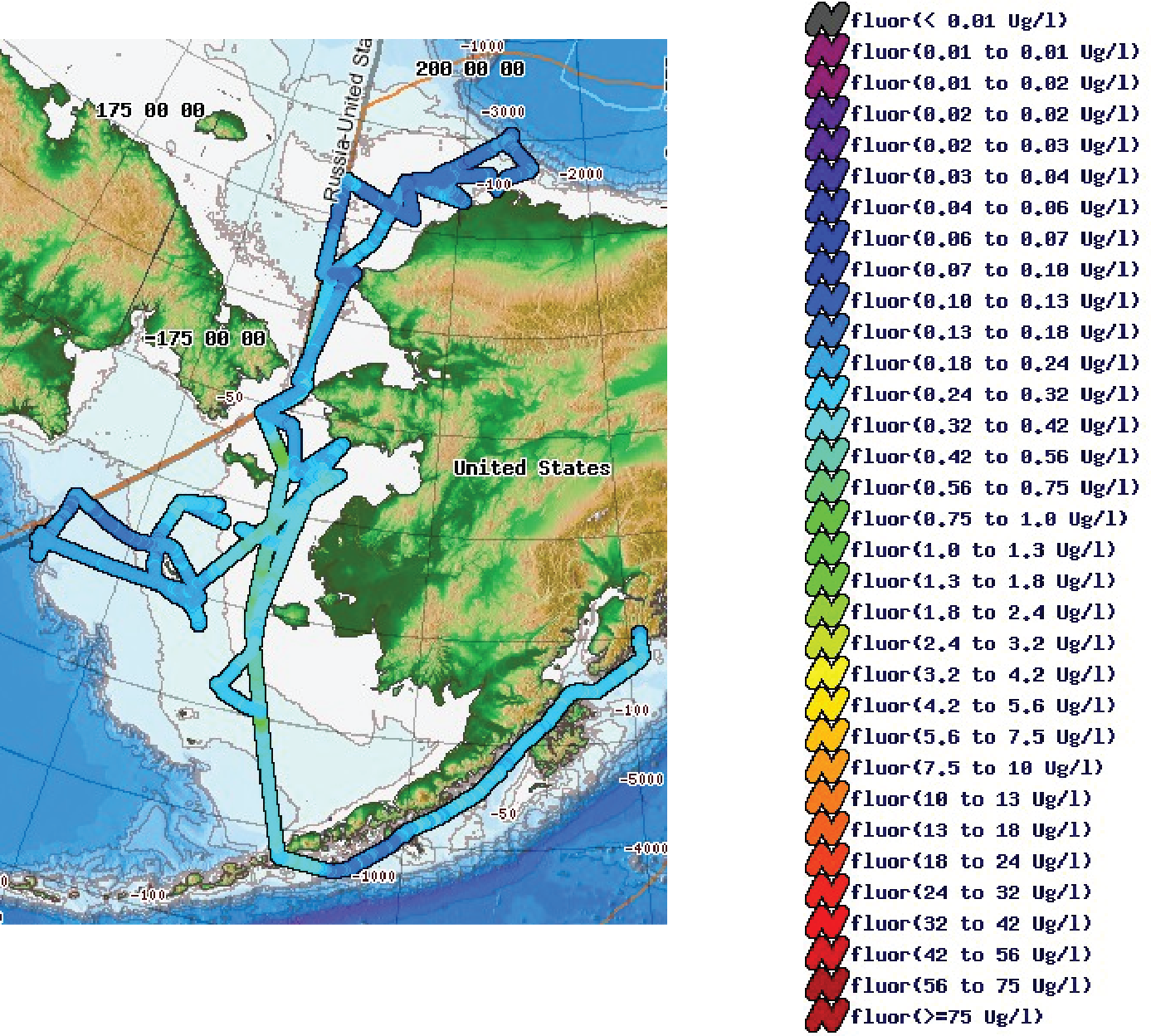During all spring and summer Healy cruises between 2008 and 2010, EOL made available on the Healy MapServer as much useful satellite imagery as possible, including AVHRR sea ice, National Ice Center ice extent for the various dates, ocean colour and ARGOS telemetered spectacle eider and walrus locations, all overlaid with the real-time ship track (see example images below). RadarSat imagery was also imported where available through one of the university researchers. 
Sea ice from AVHRR, ocean colour and the ship track. 
National Ice Center ice extent for the various dates. The location of the ship at the time of the ice extent map is circled. The cruise track of Healy is shown (these maps were generated by Steve Roberts, UAF).
MODIS sensor on Terra sending images of sea ice distribution in the Bering Strait between Siberia and western Alaska.Although not satellite imagery, researchers could also graphically display the following during the cruise (see figure below): - Location – present, future, past occupied stations
- Cruise track
- Underway seawater temperature, fluorescence, salinity, etc.
- Multibeam data, both historic and real time
- Meteorological data
- pCO2, oxygen
- ADCP data
- Bottom depth


All together, the in situ observations at select stations, the underway data from the ships sensors and the large scale satellite imagery for context complemented each other perfectly to provide the researchers the proper and necessary physical and biological context to interpret their data and address their research goals. It is clear from this project and other efforts like it, that EO information plays a critical role in helping us understand the marine ecosystem. Marine researchers around the world will continue to use the available data streams; and likely increasingly so, as the bandwidth of ships improves and is able to receive increasing amounts of data like the ones shown, and as more EO sensors come online to provide new, higher resolution and more frequent imagery of the physical and biological environment that surrounds us.
|